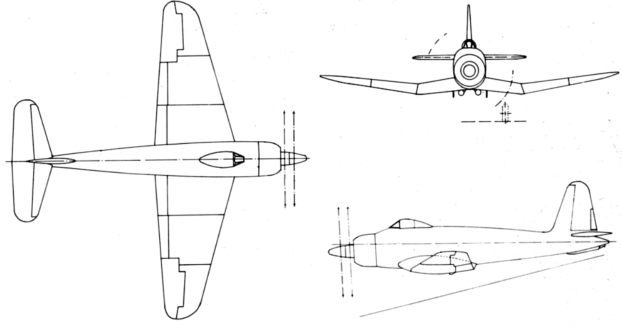- Joined
- 6 September 2006
- Messages
- 4,306
- Reaction score
- 7,424
Reading Norman Firedman's 'British Carrier Aviation' I came across the S.10/45 development of the Firebrnad/Firecrest. It is mentioned in BSP: Vol 3 but not in much depth.
S.10/45 was a Firecrest powered by a Napier E.122 Nomad turboprop. It had the inverted gull wing with two hardpoints. The engine was behind the pilot nearer the centre of gavity and the pilot was further forward with the pilot's view claimed as good as a twin-engined design. Three prototypes were planned but it was eclipsed by the Wyvern.
A 3-view from a MAP file is included but alas I lack a scanner. The tail is very Firebrandish with the cockpit moved much closer to the contra-rotating prop. Torpedo carrier and two inner wing hardpoints are also indicated. A radiator is shown forwards much like a closely cowled radial.
S.10/45 was a Firecrest powered by a Napier E.122 Nomad turboprop. It had the inverted gull wing with two hardpoints. The engine was behind the pilot nearer the centre of gavity and the pilot was further forward with the pilot's view claimed as good as a twin-engined design. Three prototypes were planned but it was eclipsed by the Wyvern.
A 3-view from a MAP file is included but alas I lack a scanner. The tail is very Firebrandish with the cockpit moved much closer to the contra-rotating prop. Torpedo carrier and two inner wing hardpoints are also indicated. A radiator is shown forwards much like a closely cowled radial.

